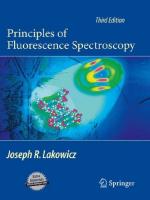|
This section contains 351 words (approx. 2 pages at 300 words per page) |
Substances that glow in the dark, called "phosphorescent" materials, have many practical applications today. Clocks and watches, for example, often have their numbers and hands coated with phosphorescent paints so that we can see what time it is in the dark. Emergency doors and stairways are also highlighted with these paints so that people can find their way out in case of a power failure.
Although we may take these products for granted, when the phenomenon of phosphorescence was first discovered in the 1600s, it seemed like a miracle. An Italian shoemaker and alchemist, Vincenzo Cascariolo, identified the first phosphorescent substance (now thought to be barium sulfide). It gave off a bluish glow in the dark after exposure to strong sunlight. This property seemed so valuable at the time that its formula remained a jealously guarded secret for many years.
Eventually, other scientists learned to prepare phosphorescent substances. In 1852, Sir George Gabriel Stokes (1819-1903), a British physicist, coined the term "fluorescence" to describe the visible glow produced by materials exposed to ultraviolet rays, an invisible form of light. This phenomenon is closely related to phosphorescence; both are caused when a chemical's atoms become " excited" by ultraviolet radiation. The main difference is that fluorescent chemicals lose their glow almost immediately, whereas phosphorescent materials can continue to glow for several hours after excitation.
Stokes studied various fluorescent materials and showed that the fluorescent light emitted would always have a longer wave length than the exciting light. These studies were complemented by Sir David Brewster's work on light wave lengths. Stokes also discovered that although ordinary glass screens out ultraviolet radiation, quartz is transparent to it.
Modern fluorescent lamps make use of the discoveries of Stokes and other scientists. Fluorescent lighting is created by coating the inside of a glass tube with phosphors, which convert the lamp's ultraviolet rays to visible light. Fluorescent chemicals are also used in common household products such as eye drops and tooth brighteners, and scientists can identify compounds by their characteristic fluorescent "fingerprint"--the wave length at which the substance begins to glow.
|
This section contains 351 words (approx. 2 pages at 300 words per page) |


